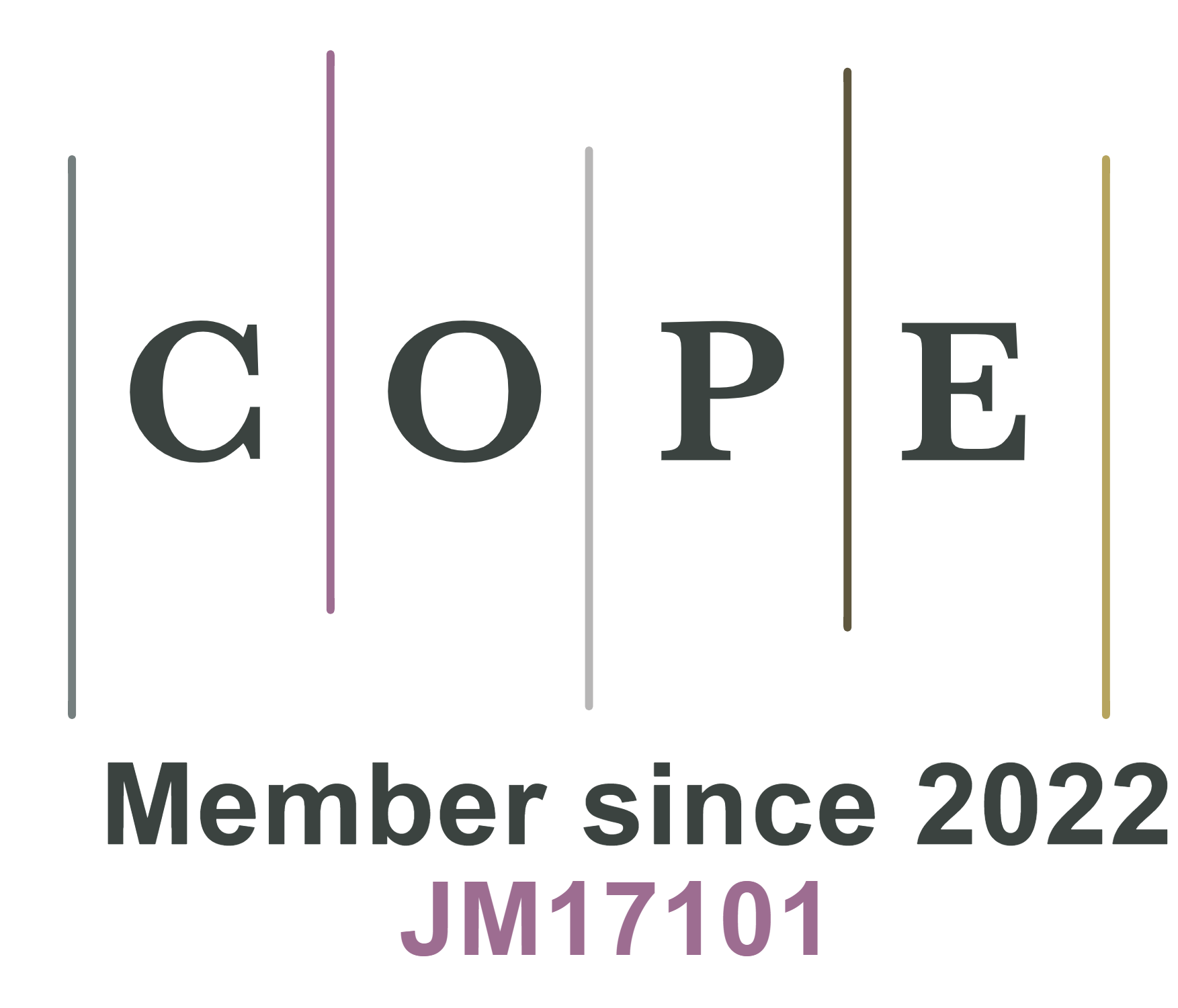REFERENCES
1. Dincer, I. Renewable energy and sustainable development: a crucial review. Renew. Sustain. Energy. Rev. 2000, 4, 157-75.
2. Fitriani,
4. Kim, Y. J.; Gu, H. M.; Kim, C. S.; et al. High-performance self-powered wireless sensor node driven by a flexible thermoelectric generator. Energy 2018, 162, 526-33.
5. vom Boegel, G.; Meyer, F.; Kemmerling, M. Wireless sensor system for industrial applications powered by thermoelectric generator. In Smart SysTech 2014; European Conference on Smart Objects, Systems and Technologies. IEEE, 2014: 1-5.
6. Yang, Y.; Wei, X.; Liu, J. Suitability of a thermoelectric power generator for implantable medical electronic devices. J. Phys. D. Appl. Phys. 2007, 40, 5790.
7. Weber, J.; Potje-kamloth, K.; Haase, F.; Detemple, P.; Völklein, F.; Doll, T. Coin-size coiled-up polymer foil thermoelectric power generator for wearable electronics. Sensors. Actuators. A. Phys. 2006, 132, 325-30.
8. Wu, W.; Du, Z.; Cui, J.; Shi, Z.; Deng, Y. Thermoelectric generator used in fire-alarm temperature sensing. J. Electron. Mater. 2015, 44, 1851-7.
9. Shi, Y.; Wang, Y.; Deng, Y.; et al. A novel self-powered wireless temperature sensor based on thermoelectric generators. Energy. Convers. Manag. 2014, 80, 110-6.
10. Dughaish, Z. Lead telluride as a thermoelectric material for thermoelectric power generation. Phys. B. Condens. Matter. 2002, 322, 205-23.
11. Goldsmid, H. J. The electrical conductivity and thermoelectric power of bismuth telluride. Proc. Phys. Soc. 1958, 71, 633.
12. Boukai, A. I.; Bunimovich, Y.; Tahir-Kheli, J.; Yu, J. K.; Goddard, W. A. I. I. I.; Heath, J. R. Silicon nanowires as efficient thermoelectric materials. Nature 2008, 451, 168-71.
13. Zhao, L. D.; Lo, S. H.; Zhang, Y.; et al. Ultralow thermal conductivity and high thermoelectric figure of merit in SnSe crystals. Nature 2014, 508, 373-7.
14. Gayner, C.; Kar, K. K. Recent advances in thermoelectric materials. Prog. Mater. Sci. 2016, 83, 330-82.
15. Bulusu, A.; Walker, D. Review of electronic transport models for thermoelectric materials. Superlattices. Microstructur. 2008, 44, 1-36.
16. Venkatasubramanian, R.; Siivola, E.; Colpitts, T.; O’Quinn, B. Thin-film thermoelectric devices with high room-temperature figures of merit. Nature 2001, 413, 597-602.
17. Pei, Y.; Shi, X.; LaLonde, A.; Wang, H.; Chen, L.; Snyder, G. J. Convergence of electronic bands for high performance bulk thermoelectrics. Nature 2011, 473, 66-9.
18. Blackburn, J. L.; Ferguson, A. J.; Cho, C.; Grunlan, J. C. Carbon-nanotube-based thermoelectric materials and devices. Adv. Mater. 2018, 30, 1704386.
19. Zhou, S.; Shi, X. L.; Li, L.; et al. Advances and outlooks for carbon nanotube-based thermoelectric materials and devices. Adv. Mater. 2025, 37, 2500947.
20. Bubnova, O.; Khan, Z. U.; Malti, A.; et al. Optimization of the thermoelectric figure of merit in the conducting polymer poly(3,4-ethylenedioxythiophene). Nat. Mater. 2011, 10, 429-33.
21. Zhou, D.; Zhang, H.; Zheng, H.; et al. Recent advances and prospects of small molecular organic thermoelectric materials. Small 2022, 18, 2200679.
22. Lee, S.; Kim, S.; Pathak, A.; et al. Recent progress in organic thermoelectric materials and devices. Macromol. Res. 2020, 28, 531-52.
23. Glaudell, A. M.; Cochran, J. E.; Patel, S. N.; Chabinyc, M. L. Impact of the doping method on conductivity and thermopower in semiconducting polythiophenes. Adv. Energy. Mater. 2015, 5, 1401072.
24. Russ, B.; Glaudell, A.; Urban, J. J.; Chabinyc, M. L.; Segalman, R. A. Organic thermoelectric materials for energy harvesting and temperature control. Nat. Rev. Mater. 2016, 1, 201650.
25. Zhang, Q.; Sun, Y.; Xu, W.; Zhu, D. Organic thermoelectric materials: emerging green energy materials converting heat to electricity directly and efficiently. Adv Mater 2014;26:6829-51.
26. Patel, S. N.; Glaudell, A. M.; Peterson, K. A.; et al. Morphology controls the thermoelectric power factor of a doped semiconducting polymer. Sci. Adv. 2017, 3, e1700434.
27. Li, W.; Hendriks, K. H.; Wienk, M. M.; Janssen, R. A. Diketopyrrolopyrrole polymers for organic solar cells. Acc. Chem. Res. 2016, 49, 78-85.
28. Cheon, H. J.; An, T. K.; Kim, Y. Diketopyrrolopyrrole (DPP)-based polymers and their organic field-effect transistor applications: a review. Macromol. Res. 2022, 30, 71-84.
29. Nielsen, C. B.; Turbiez, M.; McCulloch, I. Recent advances in the development of semiconducting DPP-containing polymers for transistor applications. Adv. Mater. 2013, 25, 1859-80.
30. Kang, I.; An, T. K.; Hong, J. A.; et al. Effect of selenophene in a DPP copolymer incorporating a vinyl group for high-performance organic field-effect transistors. Adv. Mater. 2013, 25, 524-8.
31. Lee, J. H.; Lee, Y. H.; Ha, Y. H.; et al. Semiconducting/insulating polymer blends with dual phase separation for organic field-effect transistors. RSC. Adv. 2017, 7, 7526-30.
32. Sassi, M.; Buccheri, N.; Rooney, M.; et al. Near-infrared roll-off-free electroluminescence from highly stable diketopyrrolopyrrole light emitting diodes. Sci. Rep. 2016, 6, 34096.
33. Li, Y.; Li, H.; Chen, H.; et al. Controlling crystallite orientation of diketopyrrolopyrrole-based small molecules in thin films for highly reproducible multilevel memory device: role of furan substitution. Adv. Funct. Mater. 2015, 25, 4246-54.
34. Chen, C.; Lee, W.; Shen, T.; et al. Highly reliable and sensitive tactile transistor memory. Adv. Elect. Mater. 2017, 3, 1600548.
35. Zhou, Y.; Han, S. T.; Yan, Y.; et al. Ultra-flexible nonvolatile memory based on donor-acceptor diketopyrrolopyrrole polymer blends. Sci. Rep. 2015, 5, 10683.
36. Kaur, M.; Lee, D. H.; Yang, D. S.; et al. Diketopyrrolopyrrole-bitellurophene containing a conjugated polymer and its high performance thin-film transistor sensor for bromine detection. Chem. Commun. 2014, 50, 14394-6.
37. Surya, S. G.; Nagarkar, S. S.; Ghosh, S. K.; Sonar, P.; Ramgopal, Rao. V. OFET based explosive sensors using diketopyrrolopyrrole and metal organic framework composite active channel material. Sens. Actuators. B. Chem. 2016, 223, 114-22.
38. Wang, B.; Huynh, T. P.; Wu, W.; et al. A highly sensitive diketopyrrolopyrrole-based ambipolar transistor for selective detection and discrimination of xylene isomers. Adv. Mater. 2016, 28, 4012-8.
39. Casutt, M.; Ruscello, M.; Strobel, N.; et al. Diketopyrrolopyrrole-polymer meets thiol-ene click chemistry: a cross-linked acceptor for thermally stable near-infrared photodetectors. Chem. Mater. 2019, 31, 7657-65.
40. Hu, L.; Qiao, W.; Zhou, X.; et al. Side-chain engineering for fine-tuning of molecular packing and nanoscale blend morphology in polymer photodetectors. Polym. Chem. 2017, 8, 2055-62.
41. Liu, Q.; Kanahashi, K.; Matsuki, K.; et al. Triethylene glycol substituted diketopyrrolopyrrole- and isoindigo-dye based donor-acceptor copolymers for organic light-emitting electrochemical cells and transistors. Adv. Elect. Mater. 2020, 6, 1901414.
42. Qu, S.; Tian, H. Diketopyrrolopyrrole (DPP)-based materials for organic photovoltaics. Chem. Commun. 2012, 48, 3039-51.
43. Liu, Q.; Sun, H.; Ponnappa, S. P.; et al. Naphthalene flanked diketopyrrolopyrrole: a new DPP family member and its comparative optoelectronic properties with thiophene- and furan- flanked DPP counterparts. Org. Electron. 2019, 74, 290-8.
44. Liu, Q.; Sun, H.; Blaikie, C.; et al. Naphthalene flanked diketopyrrolopyrrole based organic semiconductors for high performance organic field effect transistors. New. J. Chem. 2018, 42, 12374-85.
45. Liu, Q.; Chavhan, S.; Zhang, H.; et al. Short Alkyl chain engineering modulation on naphthalene flanked diketopyrrolopyrrole toward high-performance single crystal transistors and organic thin film displays. Adv. Elect. Mater. 2021, 7, 2000804.
46. Luo, N.; Zhang, G.; Liu, Z. Keep glowing and going: recent progress in diketopyrrolopyrrole synthesis towards organic optoelectronic materials. Org. Chem. Front. 2021, 8, 4560-81.
47. Loser, S.; Lou, S. J.; Savoie, B. M.; et al. Systematic evaluation of structure-property relationships in heteroacene - diketopyrrolopyrrole molecular donors for organic solar cells. J. Mater. Chem. A. 2017, 5, 9217-32.
48. Bürgi, L.; Turbiez, M.; Pfeiffer, R.; Bienewald, F.; Kirner, H.; Winnewisser, C. High-mobility ambipolar near-infrared light-emitting polymer field-effect transistors. Adv. Mater. 2008, 20, 2217-24.
49. Li, Y.; Sonar, P.; Murphy, L.; Hong, W. High mobility diketopyrrolopyrrole (DPP)-based organic semiconductor materials for organic thin film transistors and photovoltaics. Energy. Environ. Sci. 2013, 6, 1684-710.
50. Tang, A.; Zhan, C.; Yao, J.; Zhou, E. Design of diketopyrrolopyrrole (DPP)-based small molecules for organic-solar-cell applications. Adv. Mater. 2017, 29, 1600013.
51. Yi, Z.; Wang, S.; Liu, Y. Design of high-mobility diketopyrrolopyrrole-based π-conjugated copolymers for organic thin-film transistors. Adv. Mater. 2015, 27, 3589-606.
52. Naik, M. A.; Patil, S. Diketopyrrolopyrrole-based conjugated polymers and small molecules for organic ambipolar transistors and solar cells. J. Polym. Sci. Part. A:. Polym. Chem. 2013, 51, 4241-60.
53. Chandran, D.; Lee, K. Diketopyrrolopyrrole: a versatile building block for organic photovoltaic materials. Macromol. Res. 2013, 21, 272-83.
54. Grzybowski, M.; Gryko, D. T. Diketopyrrolopyrroles: synthesis, reactivity, and optical properties. Adv. Opt. Mater. 2015, 3, 280-320.
55. Dou, L.; Liu, Y.; Hong, Z.; Li, G.; Yang, Y. Low-bandgap near-IR conjugated polymers/molecules for organic electronics. Chem. Rev. 2015, 115, 12633-65.
56. Kim, C.; Liu, J.; Lin, J.; et al. Influence of structural variation on the solid-state properties of diketopyrrolopyrrole-based oligophenylenethiophenes: single-crystal structures, thermal properties, optical bandgaps, energy levels, film morphology, and hole mobility. Chem. Mater. 2012, 24, 1699-709.
57. Beretta, D.; Neophytou, N.; Hodges, J. M.; et al. Thermoelectrics: from history, a window to the future. Mater. Sci. Eng. R. Rep. 2019, 138, 100501.
58. Seebeck, T. J. Magnetische polarisation der metalle und erze durch temperatur-differenz; W. Engelmann, 1895. https://books.google.com/books?id=1u0ZWscprXkC&dq=58.+Seebeck+TJ.+Magnetische+Polarisation+Der+Metalle+Und+Erze+Durch+Temperatur-Differenz%3B+W.+Engelmann,+1895.%5BDOI:10.1002/andp.18260820102%5D&lr=&hl=zh-CN&source=gbs_navlinks_s (accessed 2025-05-30).
60. Du, Y.; Cai, K.; Chen, S.; et al. Thermoelectric fabrics: toward power generating clothing. Sci. Rep. 2015, 5, 6411.
61. Peltier, J. C. A. Investigation of the heat developed by electric currents in homogeneous materials and at the junction of two different conductors. Ann. Chim. Phys. 1834, 56, 371. Available from: https://archive.org/details/s3id13208250. [Last accessed on 2 July 2025].
62. Peltier, J. C. A. Nouvelles experiences sur la caloricite des courans electriques. Ann. Chim. Phys. 1834. Available from: https://www.foldvaribooks.com/pages/books/769/jean-charles-athanase-peltier/nouvelles-experiences-sur-la-caloricite-des-courans-electriques. [Last accessed on 1 July 2025].
63. Ohta, H.; Kim, S.; Mune, Y.; et al. Giant thermoelectric Seebeck coefficient of a two-dimensional electron gas in SrTiO3. Nat. Mater. 2007, 6, 129-34.
64. Heremans, J. P.; Jovovic, V.; Toberer, E. S.; et al. Enhancement of thermoelectric efficiency in PbTe by distortion of the electronic density of states. Science 2008, 321, 554-7.
65. Snyder, G. J.; Snyder, A. H. Figure of merit ZT of a thermoelectric device defined from materials properties. Energy. Environ. Sci. 2017, 10, 2280-3.
66. Dresselhaus, M.; Chen, G.; Tang, M.; et al. New directions for low-dimensional thermoelectric materials. Adv. Mater. 2007, 19, 1043-53.
67. Yoon, C.; Reghu, M.; Moses, D.; et al. Hopping transport in doped conducting polymers in the insulating regime near the metal-insulator boundary: polypyrrole, polyaniline and polyalkylthiophenes. Synth. Met. 1995, 75, 229-39.
68. Mateeva, N.; Niculescu, H.; Schlenoff, J.; Testardi, L. R. Correlation of seebeck coefficient and electric conductivity in polyaniline and polypyrrole. J. Appl. Phys. 1998, 83, 3111-7.
69. Du, Y.; Shen, S. Z.; Cai, K.; Casey, P. S. Research progress on polymer-inorganic thermoelectric nanocomposite materials. Prog. Polym. Sci. 2012, 37, 820-41.
70. Chang, K.; Jeng, M.; Yang, C.; et al. The thermoelectric performance of poly(3,4-ethylenedi oxythiophene)/poly(4-styrenesulfonate) thin films. J. Electron. Mater. 2009, 38, 1182-8.
71. Kim, D.; Kim, Y.; Choi, K.; Grunlan, J. C.; Yu, C. Improved thermoelectric behavior of nanotube-filled polymer composites with poly(3,4-ethylenedioxythiophene) poly(styrenesulfonate). ACS. Nano. 2010, 4, 513-23.
72. Kim, G. H.; Shao, L.; Zhang, K.; Pipe, K. P. Engineered doping of organic semiconductors for enhanced thermoelectric efficiency. Nat. Mater. 2013, 12, 719-23.
73. Culebras, M.; Gómez, C. M.; Cantarero, A. Enhanced thermoelectric performance of PEDOT with different counter-ions optimized by chemical reduction. J. Mater. Chem. A. 2014, 2, 10109-15.
74. Park, Y. W.; Han, W. K.; Choi, C. H.; Shirakawa, H. Metallic nature of heavily doped polyacetylene derivatives: Thermopower. Phys. Rev. B. 1984, 30, 5847.
75. Pukacki, W.; Płocharski, J.; Roth, S. Anisotropy of thermoelectric power of stretch-oriented new polyacetylene. Synth. Met. 1994, 62, 253-6.
76. Lévesque, I.; Bertrand, P.; Blouin, N.; et al. Synthesis and thermoelectric properties of polycarbazole, polyindolocarbazole, and polydiindolocarbazole derivatives. Chem. Mater. 2007, 19, 2128-38.
77. Feng-Xing, J.; Jing-Kun, X.; Bao-Yang, L.; Yu, X.; Rong-Jin, H.; Lai-Feng, L. Thermoelectric performance of poly(3,4-ethylenedioxythiophene): poly(styrenesulfonate). Chinese. Phys. Lett. 2008, 25, 2202.
78. Scholdt, M.; Do, H.; Lang, J.; et al. Organic semiconductors for thermoelectric applications. J. Electron. Mater. 2010, 39, 1589-92.
79. Sun, Y.; Wei, Z.; Xu, W.; Zhu, D. A three-in-one improvement in thermoelectric properties of polyaniline brought by nanostructures. Synth. Met. 2010, 160, 2371-6.
80. Yoon, C.; Reghu, M.; Moses, D.; Cao, Y.; Heeger, A. Thermoelectric power of doped polyaniline near the metal-insulator transition. Synth. Met. 1995, 69, 273-4.
81. Yakuphanoglu, F.; Şenkal, B. F.; Saraç, A. Electrical conductivity, thermoelectric power, and optical properties of organo-soluble polyaniline organic semiconductor. J. Electron. Mater. 2008, 37, 930-4.
82. Wang, Z. H.; Scherr, E. M.; MacDiarmid, A. G.; Epstein, A. J. Transport and EPR studies of polyaniline: a quasi-one-dimensional conductor with three-dimensional “metallic” states. Phys. Rev. B. 1992, 45, 4190.
83. Kemp, N. T.; Kaiser, A. B.; Trodahl, H. J.; et al. Effect of ammonia on the temperature-dependent conductivity and thermopower of polypyrrole. J. Polym. Sci. B. Polym. Phys. 2006, 44, 1331-8.
84. Gao, X.; Uehara, K.; Klug, D. D.; Patchkovskii, S.; Tse, J. S.; Tritt, T. M. Theoretical studies on the thermopower of semiconductors and low-band-gap crystalline polymers. Phys. Rev. B. 2005, 72, 125202.
85. Hiraishi, K.; Masuhara, A.; Nakanishi, H.; Oikawa, H.; Shinohara, Y. Evaluation of thermoelectric properties of polythiophene films synthesized by electrolytic polymerization. Jpn. J. Appl. Phys. 2009, 48, 071501.
86. Yue, R.; Chen, S.; Lu, B.; Liu, C.; Xu, J. Facile electrosynthesis and thermoelectric performance of electroactive free-standing polythieno[3,2-b]thiophene films. J. Solid. State. Electrochem. 2011, 15, 539-48.
87. Aïch, R. B.; Blouin, N.; Bouchard, A.; Leclerc, M. Electrical and thermoelectric properties of poly(2,7-carbazole) derivatives. Chem. Mater. 2009, 21, 751-7.
88. Han Z, Fina A. Thermal conductivity of carbon nanotubes and their polymer nanocomposites: a review. Prog. Polym. Sci. 2011, 36, 914-44.
89. Yu, C.; Kim, Y. S.; Kim, D.; Grunlan, J. C. Thermoelectric behavior of segregated-network polymer nanocomposites. Nano. Lett. 2008, 8, 4428-32.
90. Hiroshige, Y.; Ookawa, M.; Toshima, N. High thermoelectric performance of poly(2,5-dimethoxyphenylenevinylene) and its derivatives. Synth. Met. 2006, 156, 1341-7.
91. Wakim, S.; Aïch, B.; Tao, Y.; Leclerc, M. Charge transport, photovoltaic, and thermoelectric properties of poly(2,7-carbazole) and poly(indolo[3,2-b]carbazole) derivatives. Polym. Rev. 2008, 48, 432-62.
92. Liu, H.; Wang, J.; Hu, X.; et al. Structure and electronic transport properties of polyaniline/NaFe4P12 composite. Chem. Phys. Lett. 2002, 352, 185-90.
93. Park, H.; Lee, S. H.; Kim, F. S.; Choi, H. H.; Cheong, I. W.; Kim, J. H. Enhanced thermoelectric properties of PEDOT:PSS nanofilms by a chemical dedoping process. J. Mater. Chem. A. 2014, 2, 6532-9.
94. Fan, Z.; Li, P.; Du, D.; Ouyang, J. Significantly enhanced thermoelectric properties of PEDOT:PSS films through sequential post-treatments with common acids and bases. Adv. Energy. Mater. 2017, 7, 1602116.
95. Jung, I. H.; Hong, C. T.; Lee, U. H.; Kang, Y. H.; Jang, K. S.; Cho, S. Y. High thermoelectric power factor of a diketopyrrolopyrrole-based low bandgap polymer via finely tuned doping engineering. Sci. Rep. 2017, 7, 44704.
96. Liang, Z.; Zhang, Y.; Souri, M.; et al. Influence of dopant size and electron affinity on the electrical conductivity and thermoelectric properties of a series of conjugated polymers. J. Mater. Chem. A. 2018, 6, 16495-505.
97. Liu, Z.; Hu, Y.; Li, P.; Wen, J.; He, J.; Gao, X. Enhancement of the thermoelectric performance of DPP based polymers by introducing one 3,4-ethylenedioxythiophene electron-rich building block. J. Mater. Chem. C. 2020, 8, 10859-67.
98. Fei, Z.; Han, Y.; Gann, E.; et al. Alkylated selenophene-based ladder-type monomers via a facile route for high-performance thin-film transistor applications. J. Am. Chem. Soc. 2017, 139, 8552-61.
99. Ashraf, R. S.; Meager, I.; Nikolka, M.; et al. Chalcogenophene comonomer comparison in small band gap diketopyrrolopyrrole-based conjugated polymers for high-performing field-effect transistors and organic solar cells. J. Am. Chem. Soc. 2015, 137, 1314-21.
100. Wang, Z.; Liu, Z.; Ning, L.; et al. Charge mobility enhancement for conjugated DPP-selenophene polymer by simply replacing one bulky branching alkyl chain with linear one at each DPP unit. Chem. Mater. 2018, 30, 3090-100.
101. Ding, J.; Liu, Z.; Zhao, W.; et al. Selenium-substituted diketopyrrolopyrrole polymer for high-performance p-type organic thermoelectric materials. Angew. Chem. Int. Ed. 2019, 58, 18994-9.
102. Kim, N. Y.; Lee, T. S.; Lee, D. Y.; et al. Enhanced doping efficiency and thermoelectric performance of diketopyrrolopyrrole-based conjugated polymers with extended thiophene donors. J. Mater. Chem. C. 2021, 9, 340-7.
103. Li, H.; Song, J.; Xiao, J.; Wu, L.; Katz, H. E.; Chen, L. Synergistically improved molecular doping and carrier mobility by copolymerization of donor-acceptor and donor-donor building blocks for thermoelectric application. Adv. Funct. Mater. 2020, 30, 2004378.
104. Mao, X.; Li, X.; Zheng, D.; et al. Crystalline domain formation to enable high-performance polymer thermoelectrics inspired by thermocleavable materials. ACS. Appl. Mater. Interfaces. 2021, 13, 49348-57.
105. Zhong, F.; Yin, X.; Chen, Z.; Gao, C.; Wang, L. Significantly reduced thermal-activation energy for hole transport via simple donor engineering: understanding the role of molecular parameters for thermoelectric behaviors. ACS. Appl. Mater. Interfaces. 2020, 12, 26276-85.
106. Lee, T. S.; Lee, S. B.; Choi, D.; et al. Doping and thermoelectric behaviors of donor-acceptor polymers with extended planar backbone. Macromol. Res. 2021, 29, 887-94.
107. Lee, H.; Li, H.; Kim, Y. S.; et al. Novel dithienopyrrole-based conjugated copolymers: importance of backbone planarity in achieving high electrical conductivity and thermoelectric performance. Macromol. Rapid. Commun. 2022, 43, 2200277.
108. Suh, E. H.; Jeong, M.; Lee, K.; et al. Understanding the solution-state doping of donor-acceptor polymers through tailored side chain engineering for thermoelectrics. Adv. Funct. Mater. 2022, 32, 2207886.
109. An, C.; Hou, J. Benzo[1,2-b:4,5-b’]dithiophene-based conjugated polymers for highly efficient organic photovoltaics. Acc. Mater. Res. 2022, 3, 540-51.
110. Li, B.; Li, X.; Yang, F.; et al. Enhanced thermoelectric performance of a donor-acceptor-based two-dimensional conjugated polymer with high crystallinity. ACS. Appl. Energy. Mater. 2021, 4, 4662-71.
111. Cao, G.; Li, B.; Wu, Y.; et al. Alleviating the trade-off interrelation between seebeck coefficient and electrical conductivity by random copolymerization of two-dimensional and one-dimensional monomers. Compos. Commun. 2022, 33, 101218.
112. Lee, H.; Ayuningtias, L.; Kim, H.; et al. From non-doped to dopable: the impact of methoxy functionalization on doping and thermoelectric properties of conjugated polymers. EcoMat 2024, 6, e12442.
113. Kim, S. B.; Song, S.; Lee, T. S.; et al. Influence of the electronic structures of diketopyrrolopyrrole-based donor-acceptor conjugated polymers on thermoelectric performance. J. Mater. Chem. C. 2024, 12, 9227-35.
114. Mun, J.; Wang, G. N.; Oh, J. Y.; et al. Effect of nonconjugated spacers on mechanical properties of semiconducting polymers for stretchable transistors. Adv. Funct. Mater. 2018, 28, 1804222.
115. Galuska, L. A.; Mcnutt, W. W.; Qian, Z.; et al. Impact of backbone rigidity on the thermomechanical properties of semiconducting polymers with conjugation break spacers. Macromolecules 2020, 53, 6032-42.
116. Lin, Y.; Matsuda, M.; Chen, C.; et al. Investigation of the mobility-stretchability properties of naphthalenediimide-based conjugated random terpolymers with a functionalized conjugation break spacer. Macromolecules 2021, 54, 7388-99.
117. Liu, D.; Mun, J.; Chen, G.; et al. A design strategy for intrinsically stretchable high-performance polymer semiconductors: incorporating conjugated rigid fused-rings with bulky side groups. J. Am. Chem. Soc. 2021, 143, 11679-89.
118. Liu, D.; Lei, Y.; Ji, X.; et al. Tuning the mechanical and electric properties of conjugated polymer semiconductors: side-chain design based on asymmetric benzodithiophene building blocks. Adv. Funct. Mater. 2022, 32, 2203527.
119. Tseng, C. C.; Wang, K. C.; Lin, P. S.; et al. Intrinsically stretchable organic thermoelectric polymers enabled by incorporating fused-ring conjugated breakers. Small 2024, 20, 2401966.
120. Zeng, Y.; Zheng, W.; Guo, Y.; Han, G.; Yi, Y. Doping mechanisms of N-DMBI-H for organic thermoelectrics: hydrogen removal vs. hydride transfer. J. Mater. Chem. A. 2020, 8, 8323-8.
121. Ma, W.; Shi, K.; Wu, Y.; et al. Enhanced molecular packing of a conjugated polymer with high organic thermoelectric power factor. ACS. Appl. Mater. Interfaces. 2016, 8, 24737-43.
122. Feng, K.; Guo, H.; Wang, J.; et al. Cyano-Functionalized bithiophene imide-based n-type polymer semiconductors: synthesis, structure-property correlations, and thermoelectric performance. J. Am. Chem. Soc. 2021, 143, 1539-52.
123. Yan, X.; Xiong, M.; Li, J. T.; et al. Pyrazine-flanked diketopyrrolopyrrole (DPP): a new polymer building block for high-performance n-type organic thermoelectrics. J. Am. Chem. Soc. 2019, 141, 20215-21.
124. Han, J.; Chiu, A.; Ganley, C.; et al. 3,4,5-trimethoxy substitution on an N-DMBI Dopant with new N-type polymers: polymer-dopant matching for improved conductivity-seebeck coefficient relationship. Angew. Chem. Int. Ed. 2021, 60, 27212-9.
125. Lu, Y.; Wang, J.; Pei, J. Strategies to enhance the conductivity of n-type polymer thermoelectric materials. Chem. Mater. 2019, 31, 6412-23.
126. Sun, Y.; Di, C.; Xu, W.; Zhu, D. Advances in n-type organic thermoelectric materials and devices. Adv. Elect. Mater. 2019, 5, 1800825.
127. Nicolai, H. T.; Kuik, M.; Wetzelaer, G. A.; et al. Unification of trap-limited electron transport in semiconducting polymers. Nat. Mater. 2012, 11, 882-7.
128. Leeuw D, Simenon M, Brown A, Einerhand R. Stability of n-type doped conducting polymers and consequences for polymeric microelectronic devices. Synth. Met. 1997, 87, 53-9.
129. Wang, S.; Sun, H.; Ail, U.; et al. Thermoelectric properties of solution-processed n-doped ladder-type conducting polymers. Adv. Mater. 2016, 28, 10764-71.
130. Naab, B. D.; Gu, X.; Kurosawa, T.; To, J. W. F.; Salleo, A.; Bao, Z. Role of polymer structure on the conductivity of N-doped polymers. Adv. Electron. Mater. 2016, 2, 1600004.
131. Liu, J.; Qiu, L.; Alessandri, R.; et al. Enhancing molecular n-type doping of donor-acceptor copolymers by tailoring side chains. Adv. Mater. 2018, 30, 1704630.
132. Wang, Y.; Yang, L.; Shi, X. L.; et al. Flexible thermoelectric materials and generators: challenges and innovations. Adv. Mater. 2019, 31, 1807916.
133. Yang, C. Y.; Jin, W. L.; Wang, J.; et al. Enhancing the n-type conductivity and thermoelectric performance of donor-acceptor copolymers through donor engineering. Adv. Mater. 2018, 30, 1802850.
134. Wang, Y.; Takimiya, K. Naphthodithiophenediimide-bithiopheneimide copolymers for high-performance n-type organic thermoelectrics: significant impact of backbone orientation on conductivity and thermoelectric performance. Adv. Mater. 2020, 32, e2002060.
135. Wang, S.; Sun, H.; Erdmann, T.; et al. A chemically doped naphthalenediimide-bithiazole polymer for n-type organic thermoelectrics. Adv. Mater. 2018, 30, 1801898.
136. Wang, S.; Fazzi, D.; Puttisong, Y.; et al. Effect of backbone regiochemistry on conductivity, charge density, and polaron structure of n-doped donor-acceptor polymers. Chem. Mater. 2019, 31, 3395-406.
137. Tripathi, A.; Lee, Y.; Lee, S.; Woo, H. Y. Recent advances in n-type organic thermoelectric materials, dopants, and doping strategies. J. Mater. Chem. C. 2022, 10, 6114-40.
138. Lu, Y.; Yu, Z. D.; Un, H. I.; et al. Persistent conjugated backbone and disordered lamellar packing impart polymers with efficient n-doping and high conductivities. Adv. Mater. 2021, 33, 2005946.
139. Liu, J.; Shi, Y.; Dong, J.; et al. Overcoming coulomb interaction improves free-charge generation and thermoelectric properties for n-doped conjugated polymers. ACS. Energy. Lett. 2019, 4, 1556-64.
140. Guo, H.; Yang, C. Y.; Zhang, X.; et al. Transition metal-catalysed molecular n-doping of organic semiconductors. Nature 2021, 599, 67-73.
141. Yan, H.; Chen, Z.; Zheng, Y.; et al. A high-mobility electron-transporting polymer for printed transistors. Nature 2009, 457, 679-86.
142. Guo, K.; Bai, J.; Jiang, Y.; et al. Diketopyrrolopyrrole-based conjugated polymers synthesized via direct arylation polycondensation for high mobility pure n-channel organic field-effect transistors. Adv. Funct. Mater. 2018, 28, 1801097.
143. Park, J. H.; Jung, E. H.; Jung, J. W.; Jo, W. H. A fluorinated phenylene unit as a building block for high-performance n-type semiconducting polymer. Adv. Mater. 2013, 25, 2583-8.
144. Sun, B.; Hong, W.; Yan, Z.; Aziz, H.; Li, Y. Record high electron mobility of 6.3 cm2 V-1 s-1 achieved for polymer semiconductors using a new building block. Adv. Mater. 2014, 26, 2636-42.
145. Yan, X.; Xiong, M.; Deng, X. Y.; et al. Approaching disorder-tolerant semiconducting polymers. Nat. Commun. 2021, 12, 5723.
146. Wang, J.; Feng, K.; Jeong, S. Y.; et al. Acceptor-acceptor type polymers based on cyano-substituted benzochalcogenadiazole and diketopyrrolopyrrole for high-efficiency n-type organic thermoelectrics. Polym. J. 2023, 55, 507-15.
147. Shi, Y.; Zhang, X.; Du, T.; Han, Y.; Deng, Y.; Geng, Y. A high-performance n-type thermoelectric polymer from C-H/C-H oxidative direct arylation polycondensation. Angew. Chem. Int. Ed. 2023, 62, e202219262.
148. Tu, L.; Wang, J.; Wu, Z.; et al. Cyano-functionalized pyrazine: a structurally simple and easily accessible electron-deficient building block for n-type organic thermoelectric polymers. Angew. Chem. Int. Ed. 2024, 63, e202319658.
149. Gao, Y.; Ke, Y.; Wang, T.; et al. An n-type conjugated polymer with low crystallinity for high-performance organic thermoelectrics. Angew. Chem. Int. Ed. 2024, 63, e202402642.
150. Shen, T.; Liu, D.; Zhang, J.; Wei, Z.; Wang, Y. A high-mobility n-type noncovalently-fused-ring polymer for high-performance organic thermoelectrics. Angew. Chem. Int. Ed. 2024, 63, e202409018.
151. Ma, M.; Ye, G.; Jang, S.; et al. Realizing an N-type organic thermoelectric ZT of 0.46. ACS. Energy. Lett. 2025, 10, 1813-20.
152. Tripathi, A.; Ko, Y.; Kim, M.; et al. Optimization of thermoelectric properties of polymers by incorporating oligoethylene glycol side chains and sequential solution doping with preannealing treatment. Macromolecules 2020, 53, 7063-72.
153. Lee, Y.; Park, J.; Son, J.; Woo, H. Y.; Kwak, J. Degenerately doped semi-crystalline polymers for high performance thermoelectrics. Adv. Funct. Mater. 2021, 31, 2006900.
154. Yoon, S. E.; Kang, Y.; Noh, S. Y.; et al. High efficiency doping of conjugated polymer for investigation of intercorrelation of thermoelectric effects with electrical and morphological properties. ACS. Appl. Mater. Interfaces. 2020, 12, 1151-8.
155. Jacobs, I. E.; Aasen, E. W.; Oliveira, J. L.; et al. Comparison of solution-mixed and sequentially processed P3HT:F4TCNQ films: effect of doping-induced aggregation on film morphology. J. Mater. Chem. C. 2016, 4, 3454-66.
156. Fontana, M. T.; Stanfield, D. A.; Scholes, D. T.; Winchell, K. J.; Tolbert, S. H.; Schwartz, B. J. Evaporation vs solution sequential doping of conjugated polymers: F4TCNQ doping of micrometer-thick P3HT films for thermoelectrics. J. Phys. Chem. C. 2019, 123, 22711-24.
157. Ma, T.; Dong, B. X.; Onorato, J. W.; et al. Correlating conductivity and Seebeck coefficient to doping within crystalline and amorphous domains in poly(3-(methoxyethoxyethoxy)thiophene). J. Polym. Sci. 2021, 59, 2797-808.
158. Karpov, Y.; Erdmann, T.; Stamm, M.; et al. Molecular doping of a high mobility diketopyrrolopyrrole-dithienylthieno[3,2-b]thiophene donor-acceptor copolymer with F6TCNNQ. Macromolecules 2017, 50, 914-26.
159. Kroon, R.; Kiefer, D.; Stegerer, D.; Yu, L.; Sommer, M.; Müller, C. Polar side chains enhance processability, electrical conductivity, and thermal stability of a molecularly p-doped polythiophene. Adv. Mater. 2017, 29, 1700930.
160. Karpov, Y.; Erdmann, T.; Raguzin, I.; et al. High conductivity in molecularly p-doped diketopyrrolopyrrole-based polymer: the impact of a high dopant strength and good structural order. Adv. Mater. 2016, 28, 6003-10.
161. Saska, J.; Gonel, G.; Bedolla-valdez, Z. I.; et al. A freely soluble, high electron affinity molecular dopant for solution processing of organic semiconductors. Chem. Mater. 2019, 31, 1500-6.
162. Patel, S. N.; Glaudell, A. M.; Kiefer, D.; Chabinyc, M. L. Increasing the thermoelectric power factor of a semiconducting polymer by doping from the vapor phase. ACS. Macro. Lett. 2016, 5, 268-72.
163. Schlitz, R. A.; Brunetti, F. G.; Glaudell, A. M.; et al. Solubility-limited extrinsic n-type doping of a high electron mobility polymer for thermoelectric applications. Adv. Mater. 2014, 26, 2825-30.
164. Un, H.; Gregory, S. A.; Mohapatra, S. K.; et al. Understanding the effects of molecular dopant on n-type organic thermoelectric properties. Adv. Energy. Mater. 2019, 9, 1900817.
165. Dong, C.; Deng, S.; Meng, B.; Liu, J.; Wang, L. A Distannylated monomer of a strong electron-accepting organoboron building block: enabling acceptor-acceptor-type conjugated polymers for n-type thermoelectric applications. Angew. Chem. Int. Ed. 2021, 60, 16184-90.
166. Wang, S.; Ruoko, T. P.; Wang, G.; et al. Sequential doping of ladder-type conjugated polymers for thermally stable n-type organic conductors. ACS. Appl. Mater. Interfaces. 2020, 12, 53003-11.
167. Zhang, F.; Zang, Y.; Huang, D.; et al. Modulated thermoelectric properties of organic semiconductors using field-effect transistors. Adv. Funct. Mater. 2015, 25, 3004-12.
168. Rossi, P.; Pallini, F.; Coco, G.; et al. An iminostilbene functionalized benzimidazoline for enhanced n-type solution doping of semiconducting polymers for organic thermoelectrics. Adv. Mater. Interfaces. 2023, 10, 2202416.
169. Huang, D.; Yao, H.; Cui, Y.; et al. Conjugated-backbone effect of organic small molecules for n-type thermoelectric materials with ZT over 0.2. J. Am. Chem. Soc. 2017, 139, 13013-23.









